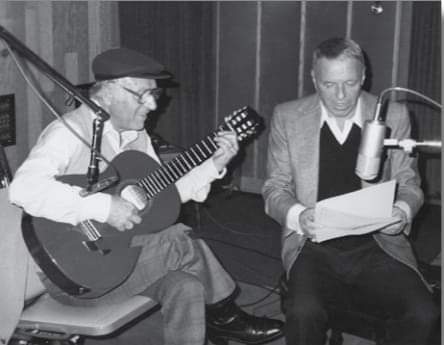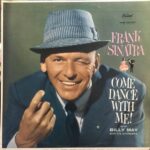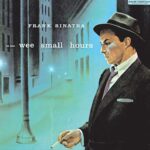
“FRANK SINATRA AND TONY MOTTOLA: LONG SUNDAY OF FRIENDSHIP AND MUSIC”
By Mahnuel Muñoz
Fifty years before performing memorable duets on stages around the world in the 1980s, Frank Sinatra and Tony Mottola were just a pair of ambitious teenage musicians performing at radio stations and venues in New Jersey. Not long after, both were already on the professional circuit, Sinatra, very famous with Harry James and Tommy Dorsey, and Mottola, somewhat less so with George Hall‘s band, which was nevertheless notable for a plucky Newark singer named Dolly Dawn and a rhythm section that, in addition to the 18-year-old guitarist, included Nick Fatool, Doc Goldberg and Johnny Guarnieri.
In the early 1940s, both returned to radio, now in a big way, at CBS in New York, where Mottola was on the payroll as a musician in the orchestra that accompanied Sinatra on programs such as “The Chesterfield Supper Club.” They also recorded together on Columbia Records in some sessions with Axel Stordahl and a handful of songs that the singer recorded with the Tony Mottola Trio in October 1947, in the style of the Nat King Cole Trio recordings.
While Sinatra tried to absorb his serious crisis in the early 1950s to make one of popular music’s most shocking comebacks, Mottola stayed in New Jersey and became a legendary studio musician in New York. The pair occasionally crossed paths over the years at Frank’s recording sessions and television shows, but their careers followed separate courses.
Until 1980, when Sinatra’s guitarist, Al Viola, left the tour he was sharing with The Voice just before the singer arrived there for a week at Carnegie Hall and Atlantic City. Sinatra told his music contractor Joe Malin, “Let’s see what Tony is doing.” In reality, he didn’t do much. The guitarist was more or less retired and spent the winter in Florida. “I haven’t played a guitar in months,” he told Malin when he got the call. “So what?” Joe said.
When they met to rehearse, Frank explained that he wanted the guitarist to do a solo with the band and then they would do something together, just the two of them, “like the old days at CBS,” he said. It was a winning formula from the start and at the end of two weeks Sinatra asked him to go on tour. Mottola resisted at first, “I can’t get up and leave my wife and travel like I did when I was 18.” “What’s the problem? Bring Mitzi,” Sinatra replied. (Mrs. Mottola was also an old friend from the WAAT days, another girl singer back then.)
And so began what Mottola called his “magic carpet ride.” The first trip took them from New York to South Africa, Rio de Janeiro and Buenos Aires. Along the way, for more than six years, they reached Japan, London, France, the Dominican Republic, most major cities in the US, and performed for the Queen of England and at a state dinner at the House White.
Mottola sketched out almost 40 standard guitar arrangements and would stop by the singer’s dressing room with his guitar and his sheet music before the show to see what he wanted to do to the “boss.”
Their duets became famous. The climax of it all came in 1983 when Sinatra decided to record a Jule Styne song with lyrics by Susan Birkenhead called “It’s Sunday.”
He recorded three versions with a full orchestra, first an arrangement by Peter Max and then two attempts by Don Costa.
Still unsatisfied, he told Don that it lacked the intimacy of a song about the simple pleasures and quiet love of an older couple on a lazy Sunday morning. He asked Costa to listen to it alone with Mottola to get a frame of reference. Costa, who started out as a guitarist, said: “You’ve got what you want, Frank. Just do it with Tony.“
A month later, they did exactly that. The two went to a studio and Sinatra recorded the tune for the fourth time. Of an estimated more than 1,200 studio recordings made by the singer, “It’s Sunday” is the only time he recorded with a lead guitar as accompaniment.
The song was released as the B-side of a 45 single alongside “Here’s to the Band“. It is considered a classic, although very little-known, performance from Sinatra’s late career. “It’s a very difficult song to sing. In the first two bars there are something like eight words in each measure! It’s the first time I’ve recorded something with a lead guitar, and I’m very proud of it,” Mottola told author Will Friedwald.
















